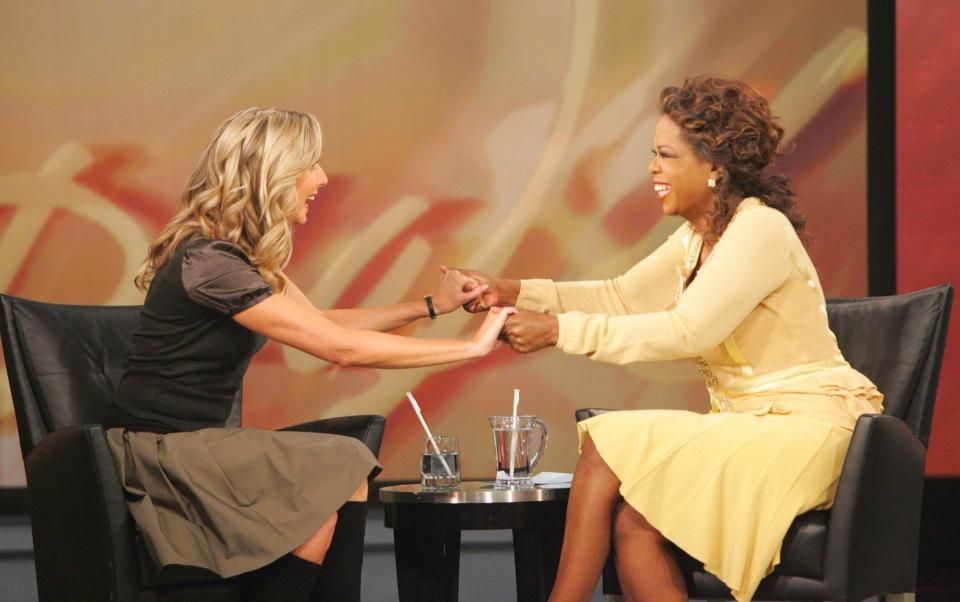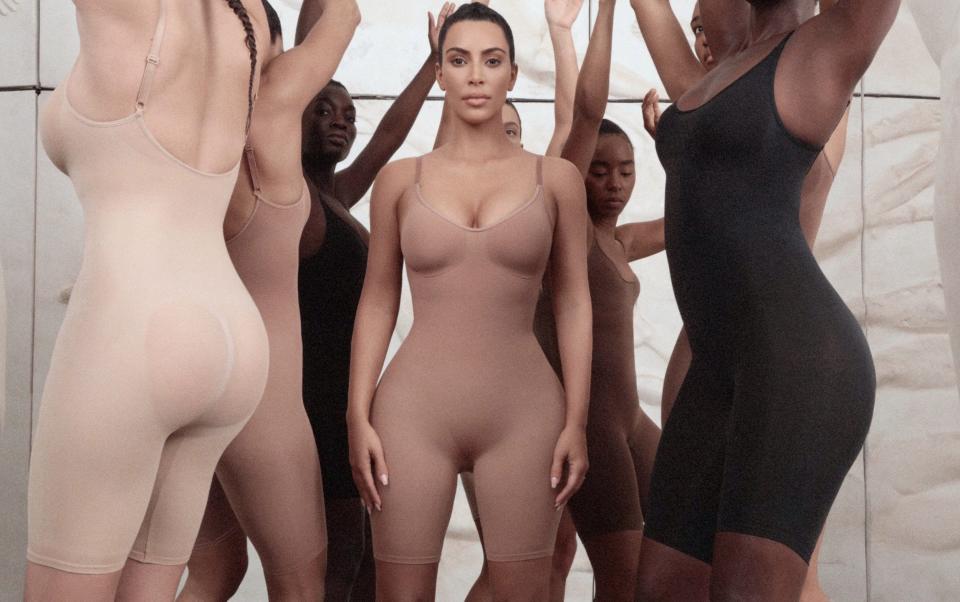The rise of Spanx and how big pants became big business (with a little help from Oprah)

On paper, there shouldn’t be much very glamorous about Spanx. The brand’s core product has always been its spandex scaffolding pants; skin-coloured, waist-skimming, cycling short-esque girdles that fall into the not particularly chic-sounding category of ‘shapewear’, or ‘solutionwear’.
Yet, 21 years on from its founding, the American company was valued at $1.2 billion on Thursday after closing a deal to sell a majority stake in the business. Television host Oprah Winfrey, actress Reese Witherspoon and Whitney Wolfe Herd, the billionaire founder of dating service Bumble, are among the new investors, completing an all-female board.
Winfrey, incidentally, was crucial to the early success of the brand. After founder Sara Blakeley launched her first patented products in 2000, Winfrey included them in a televised edit of her ‘Favourite Things’. Next, she invited Blakeley on to her talk show to detail how she had turned $5,000 of personal savings into $100 million in retail sales in just six years, all from her apartment.
Today, Winfrey calls them a product that has “changed [my] life”. “When Sara first came on The Oprah Show to tell us about her idea for Spanx, I knew it was brilliant,” Winfrey said on Thursday. “From the moment I wore my first pair, they became a staple in my wardrobe.”

While Winfrey directly promoted Spanx from the outset, Witherspoon and her Hollywood peers in the early 2000s are also responsible for glamorising the solutionwear. The girdle became an unlikely essential for any celebrity attending a red carpet event - a best-kept celebrity style secret that the public quickly wanted in on for weddings and parties, once they found out about it.
At first, they were something stars didn’t want to admit to wearing. But then Spanx became something to brag about - a way that a woman with a flawless figure might demonstrate that she is actually just like anyone else. “There are these great things called Spanx, and they just squeeze you in,” Gwyneth Paltrow said after giving birth to her daughter Apple in 2004, admitting that she was wearing not one but two pairs under her dress. “It's terrific. That's how all the Hollywood girls do it."
These days there are more than 45 different Spanx shapewear products and 27 bra types, from shorts to slips, available in myriad sizes and colours. Actress Jennifer Garner religiously wears the bestselling ‘Bra-llelujah’ bra, she recently detailed. British television presenter Holly Willoughby revealed that she wears the full length body suit under her dresses for television appearances.
The range on offer has also expanded well beyond solutionwear; Spanx now offers figure-flattering activewear and swimwear, leggings, bras and denim - as well as Spanx for men.

But being a product that is, essentially, designed to make women look thinner and feel ‘smoother’, it is perhaps surprising that the popularity of Spanx hasn’t waned at all in recent years when body positivity has been championed over diet culture in the media.
Actress Lena Dunham was one high profile name to recently take aim at Spanx, stating that she refuses to wear them and doesn’t agree with the mass adoption of them. “It’s other women who have been indoctrinated with the same message: ‘Didn’t you get the memo? We’re all doing this. We’re all going to wear the Spanx,” she said, before detailing a time that she did wear an uncomfortable corset to a gala, and the actress Glenn Close helpfully cut her out of it in the bathroom.
By ensuring that the company is run by women, for women, and reiterating the message of dressing for one’s own confidence rather than to please someone else, Spanx has so far managed to swerve the pitfalls that others in the lingerie industry have recently been subject to.
Another of America’s lingerie giants, Victoria’s Secret, fell into administration in 2020 before being rescued, after failing to acknowledge the changing narratives around sexiness in the market. It has since recovered, with an all-new cast of brand representatives who are not traditional ‘supermodels’, and a new comfort and confidence-focussed product offering to appeal to women shopping for themselves.
After originally redefining the shapewear market, Spanx has also had to fight to maintain its position as a leader and retain its relevance along the way. Inspired, undoubtedly, by Blakeley’s success, several key competitors have emerged in the last decade including Heist and Commando, as well as own-brand versions being sold at high street shops from H&M to Marks & Spencer.
One of the most prominent of these competitors, however, has been Skims, the brand founded by reality television star Kim Kardashian in 2019. In just three years, Kardashian’s company was valued at $1.6 billion in April 2021, after selling more than 4 million items of shapewear and loungewear. Its lower price points, and its dynamic advertising campaigns with clear messaging around inclusivity, have led to a swiftly-formed but loyal customer base. Kardashian and her business partners dismissed the market as ‘dusty’ before they joined it.

So where next for Spanx? Now a powerhouse company and a household name, Blakeley, who still retains a majority stake, seems most focussed on enhancing her company’s reputation as a top place to work, and operating as the most established competitor in a now very lucrative market.
Expressing her thanks to her staff for 21 years of success back in the spring, she theatrically spun a globe before revealing that she had bought every one of her 750 employees two first class plane tickets to go anywhere in the world, and that they would each receive a $10,000 bonus.
“We believe we will make the world a better place... one butt at a time,” she famously stated as the mantra to her company when it launched. Will the next 20 years of keeping the shapewear brand in good shape be such a smooth task?


